Abstract
The antibacterial activity of N-formimidoyl thienamycin (MK0787) was evaluated in 335 clinical isolates of ampicillin-resistant Enterobacteriaceae, 50 Pseudomonas aeruginosa strains, 28 Acinetobacter spp., 50 Streptococcus faecalis strains, and 7 oxacillin-resistant Staphylococcus aureus strains and was compared with the recently developed beta-lactam antibiotics mezlocillin, cefuroxime, cefazedone, cefoperazone, cefotaxime, and moxalactam. Among the gram-negative bacteria, N-formimidoyl thienamycin was less active than cefotaxime against Klebsiella, Serratia, and Proteus spp. but had comparable activity against Escherichia coli and Enterobacter strains. Activity of the thienamycin derivative was somewhat lower than that of moxalactam against most of the strains and superior to that of mezlocillin, cefuroxime, and cefoperazone. Moreover, N-formimidoyl thienamycin was the most active drug against P. aeruginosa and Acinetobacter spp. and had activity comparable to that of ampicillin against Streptococcus faecalis. N-Formimidoyl thienamycin was bactericidal at concentrations less than twice the minimal inhibitory concentration (MIC) in all gram-negative isolates tested. Oxacillin-resistant staphylococci (MIC of oxacillin, greater than 4 micrograms/ml) were inhibited at low concentrations of the thienamycin derivative (90% MIC, 0.25 micrograms/ml); however, N-formimidoyl thienamycin was not bactericidal at the 90% MIC. The antibacterial activity of N-formimidoyl thienamycin against all of the gram-negative bacilli was observed to be independent of beta-lactamase production.
Full text
PDF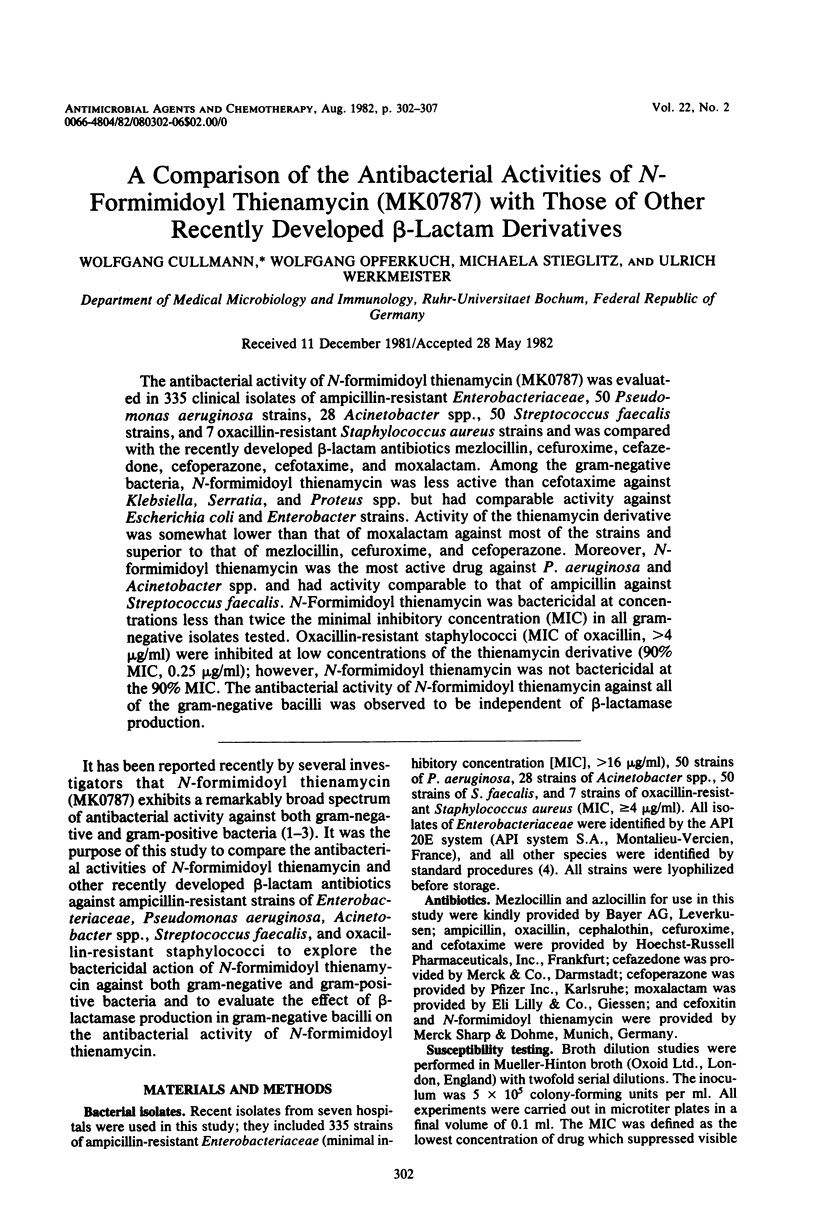
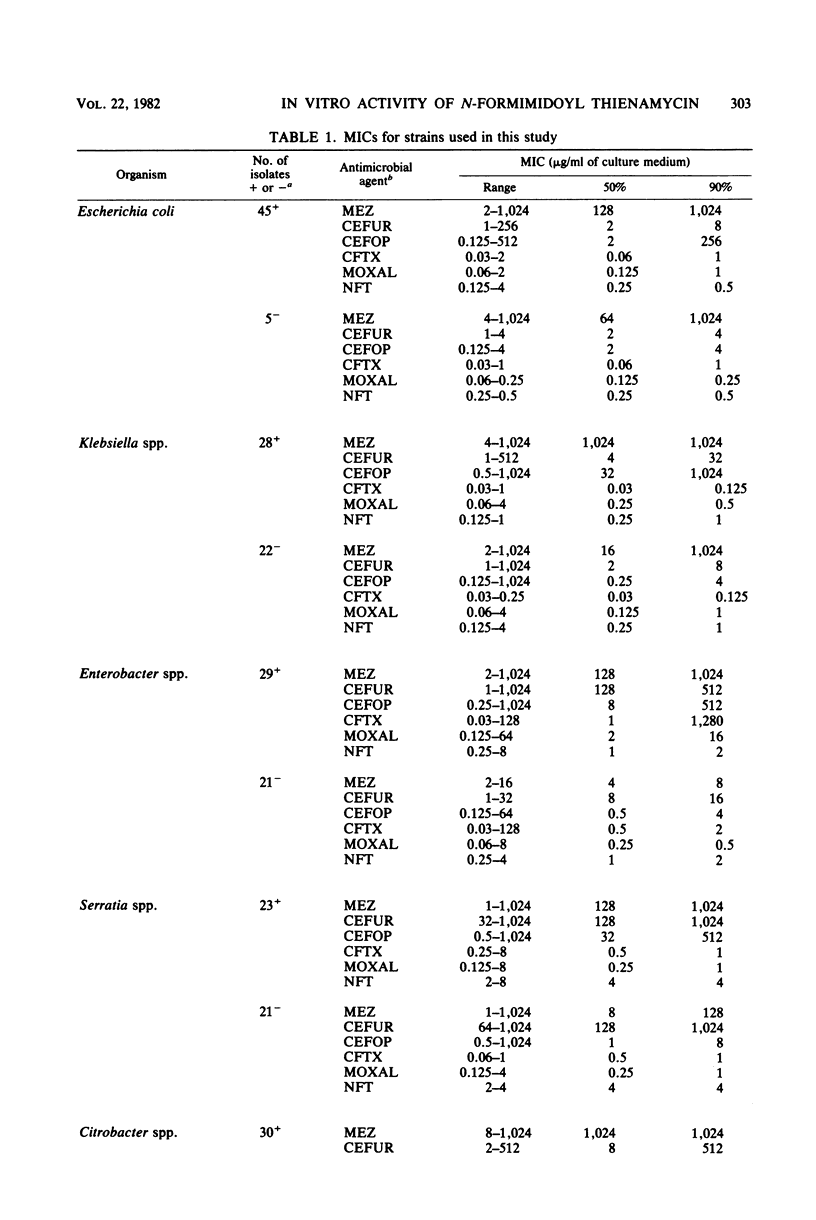
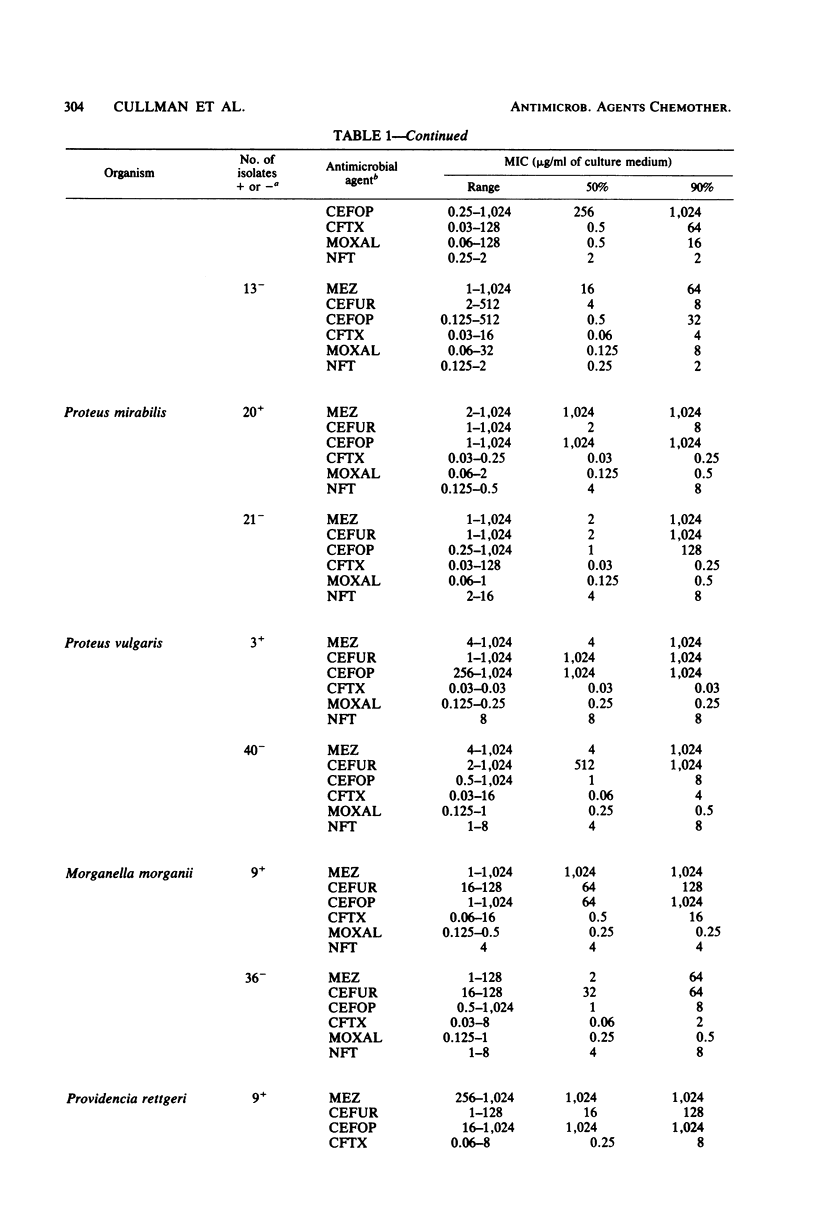
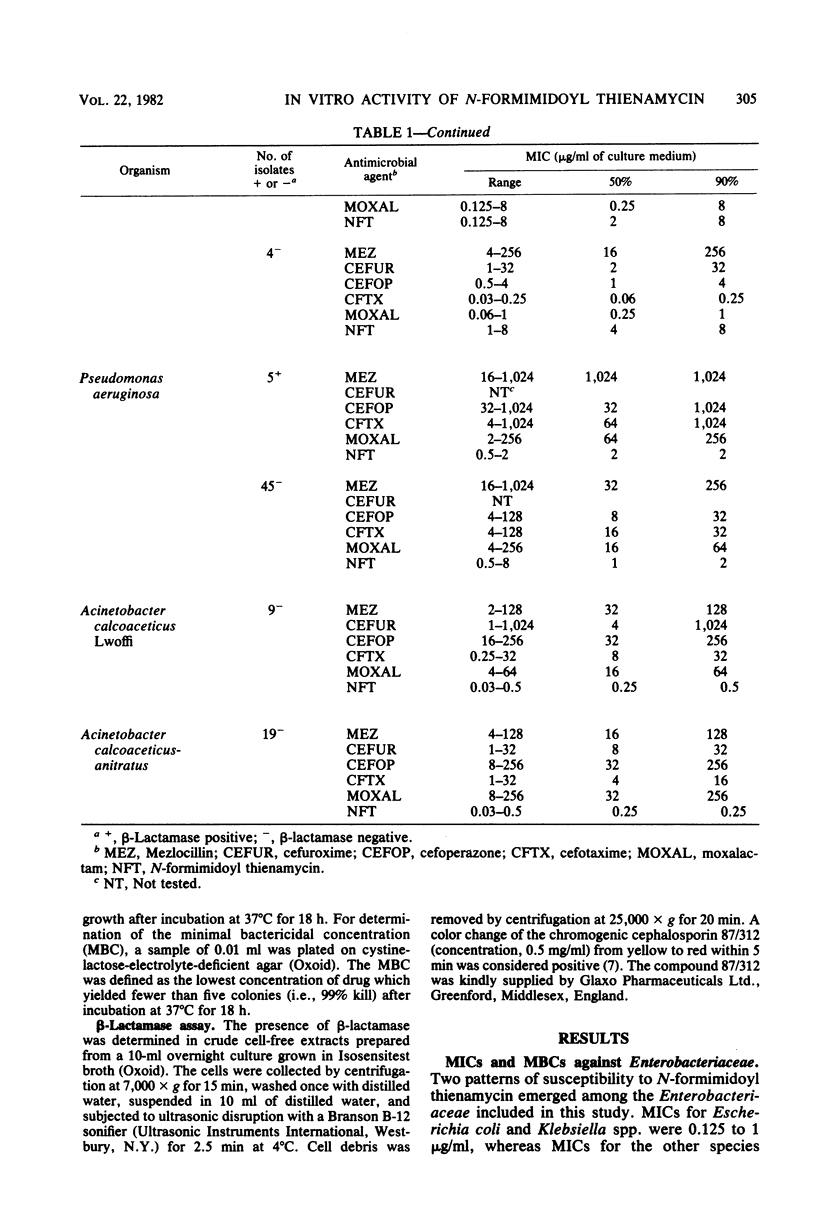
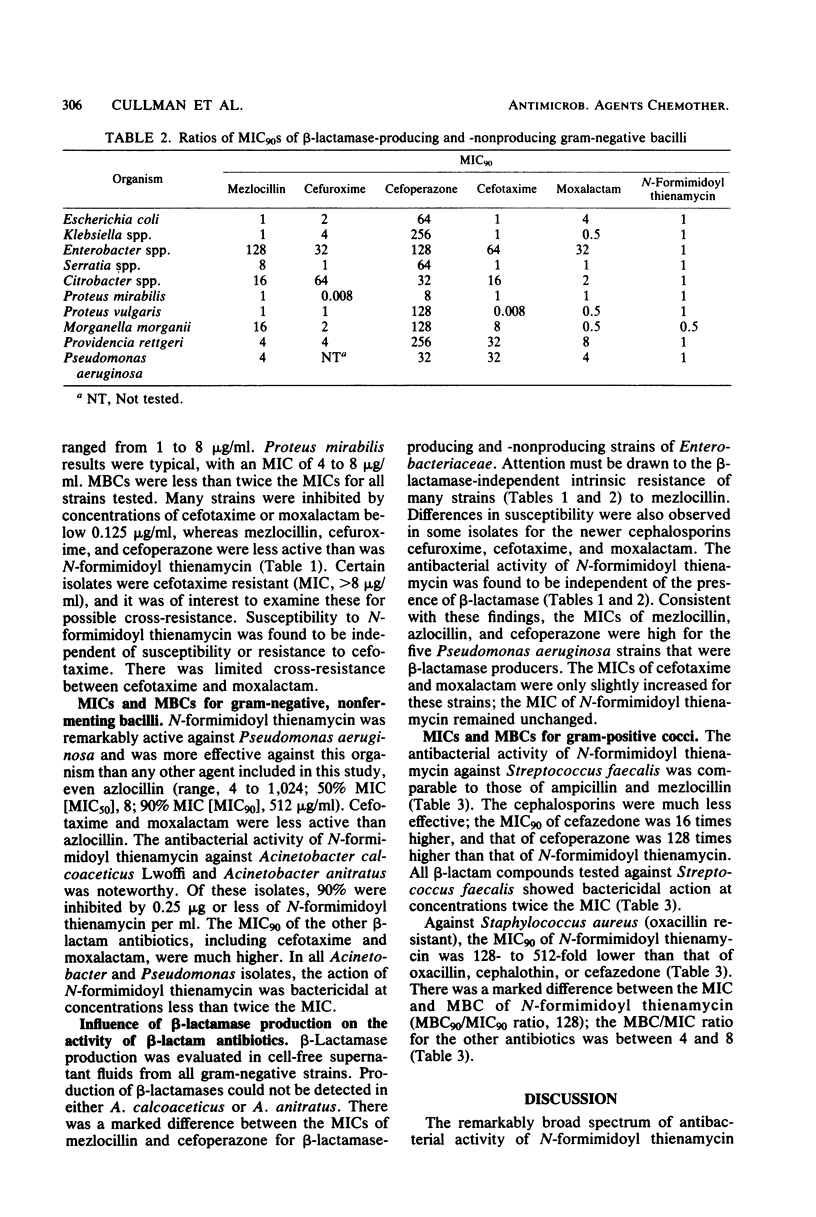
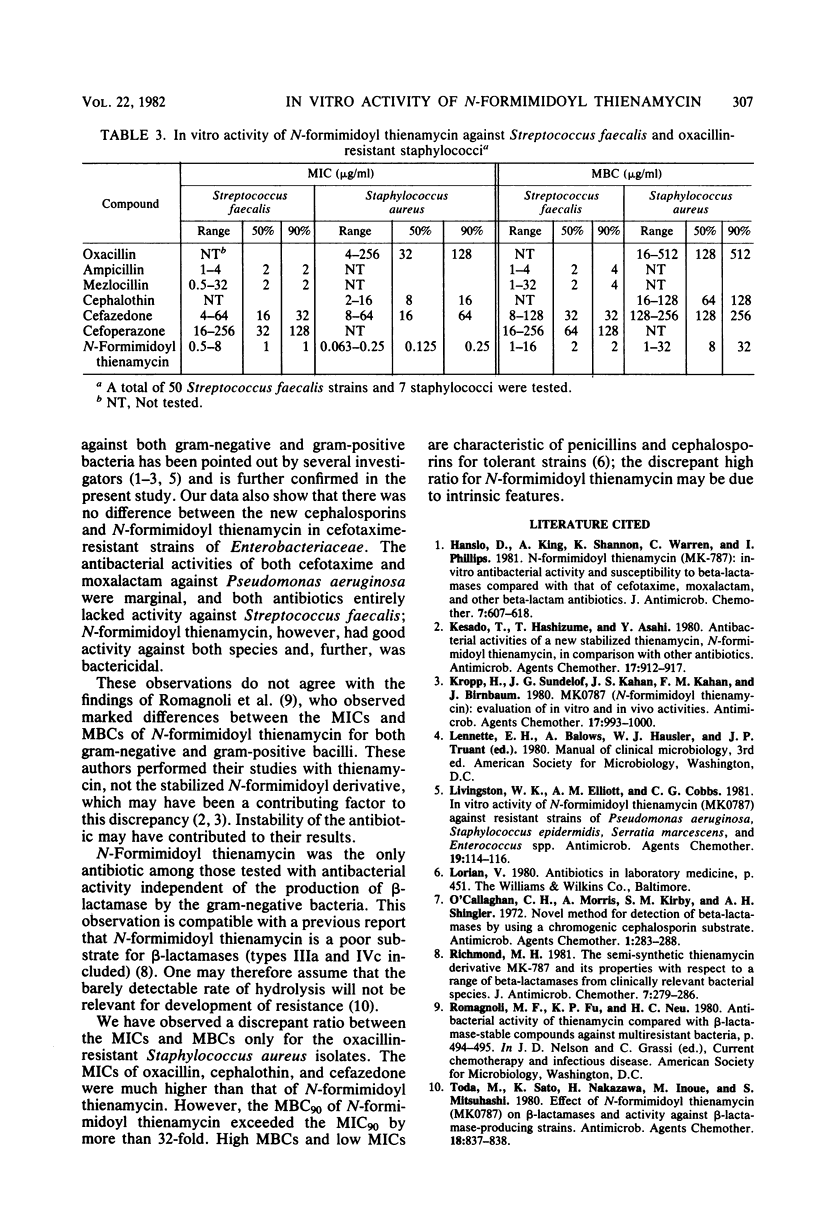
Selected References
These references are in PubMed. This may not be the complete list of references from this article.
- Hanslo D., King A., Shannon K., Warren C., Phillips I. N-Formimidoyl thienamycin (MK0787): in-vitro antibacterial activity and susceptibility to beta-lactamases compared with that of cefotaxime, moxalactam and other beta-lactam antibiotics. J Antimicrob Chemother. 1981 Jun;7(6):607–617. doi: 10.1093/jac/7.6.607. [DOI] [PubMed] [Google Scholar]
- Kesado T., Hashizume T., Asahi Y. Antibacterial activities of a new stabilized thienamycin, N-formimidoyl thienamycin, in comparison with other antibiotics. Antimicrob Agents Chemother. 1980 Jun;17(6):912–917. doi: 10.1128/aac.17.6.912. [DOI] [PMC free article] [PubMed] [Google Scholar]
- Kropp H., Sundelof J. G., Kahan J. S., Kahan F. M., Birnbaum J. MK0787 (N-formimidoyl thienamycin): evaluation of in vitro and in vivo activities. Antimicrob Agents Chemother. 1980 Jun;17(6):993–1000. doi: 10.1128/aac.17.6.993. [DOI] [PMC free article] [PubMed] [Google Scholar]
- Livingston W. K., Elliott A. M., Cobbs C. G. In vitro activity of N-formimidoyl thienamycin (MK0787) against resistant strains of Pseudomonas aeruginosa, Staphylococcus epidermidis, Serratia marcescens, and Enterococcus spp. Antimicrob Agents Chemother. 1981 Jan;19(1):114–116. doi: 10.1128/aac.19.1.114. [DOI] [PMC free article] [PubMed] [Google Scholar]
- O'Callaghan C. H., Morris A., Kirby S. M., Shingler A. H. Novel method for detection of beta-lactamases by using a chromogenic cephalosporin substrate. Antimicrob Agents Chemother. 1972 Apr;1(4):283–288. doi: 10.1128/aac.1.4.283. [DOI] [PMC free article] [PubMed] [Google Scholar]
- RIchmond M. H. The semi-synthetic thienamycin derivative MK0787 and its properties with respect to a range of beta-lactamases from clinically relevant bacterial species. J Antimicrob Chemother. 1981 Mar;7(3):279–285. doi: 10.1093/jac/7.3.279. [DOI] [PubMed] [Google Scholar]
- Toda M., Sato K., Nakazawa H., Inoue M., Mitsuhashi S. Effect of N-formimidoyl thienamycin (MK0787) on beta-lactamases and activity against beta-lactamase-producing strains. Antimicrob Agents Chemother. 1980 Nov;18(5):837–838. doi: 10.1128/aac.18.5.837. [DOI] [PMC free article] [PubMed] [Google Scholar]


